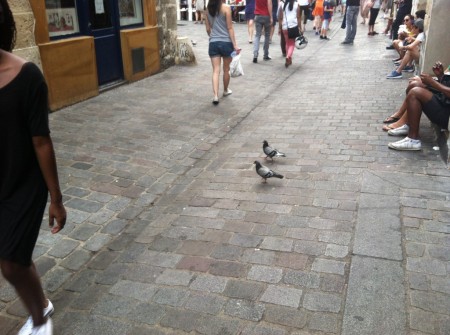I’m in France for ten days with my history-teacher husband. On the itinerary are many places we’re both eager to see, including Lyon, some chateaux in the Loire Valley, the Bayeux tapestry, and the beaches and battle sites of Normandy. But Saturday was a special day for me. We visited the Paris sewers.
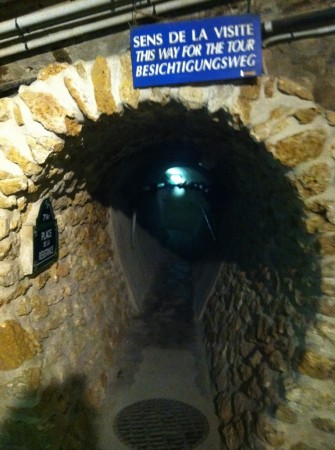 Yes, there is actually a museum devoted to exploring the sewers beneath the streets, of which Parisians get to be very proud. If you’ve read my Poop book, you’ll know that London was the first major city to build massive sewers, thanks to Sir Joseph Bazalgette. But Paris followed suit just a few years later. In 1854, Eugene Belgrand was appointed to be head of the Parisian Water Board.
Yes, there is actually a museum devoted to exploring the sewers beneath the streets, of which Parisians get to be very proud. If you’ve read my Poop book, you’ll know that London was the first major city to build massive sewers, thanks to Sir Joseph Bazalgette. But Paris followed suit just a few years later. In 1854, Eugene Belgrand was appointed to be head of the Parisian Water Board. 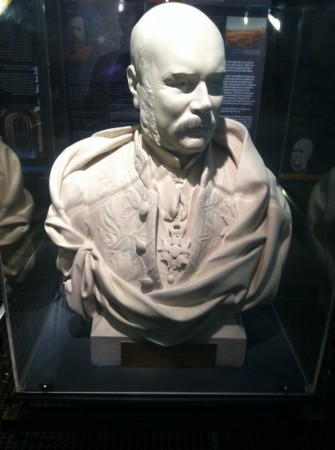 His brilliant idea was to build aqueducts that supplied drinking water drawn from up river. His plan was completed in 1894, but not before Paris experienced serious cholera outbreaks as well as a major Big Stink, similar to the one in London in the 1850s. Interestingly, there’s no mention of the Paris Big Stink in the museum exhibit. But they have models of dredger wagons, which were used to move the euphemistically called “hybrid mixture” along and which then “irrigated and fertilized” fields downstream from the river. I’ve always felt sorry for those residents living downstream from these major urban engineering projects.
His brilliant idea was to build aqueducts that supplied drinking water drawn from up river. His plan was completed in 1894, but not before Paris experienced serious cholera outbreaks as well as a major Big Stink, similar to the one in London in the 1850s. Interestingly, there’s no mention of the Paris Big Stink in the museum exhibit. But they have models of dredger wagons, which were used to move the euphemistically called “hybrid mixture” along and which then “irrigated and fertilized” fields downstream from the river. I’ve always felt sorry for those residents living downstream from these major urban engineering projects.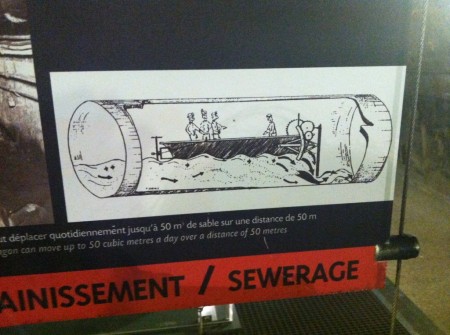
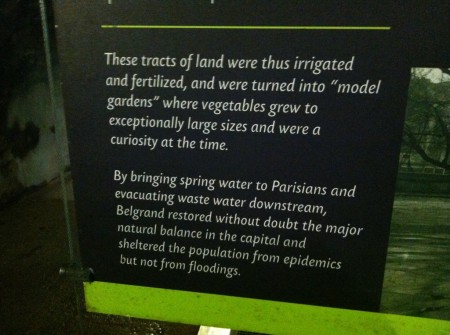
I learned about the so-called “cleaner balls” that are used to clean the sewers. They’re these giant floating balls that are slightly smaller than the tunnel’s circumference—the waste water is pushed through it around the ball at high speed. Here’s a picture. (The French, I’ve found, like to put cheerful faces on a lot of their signage.)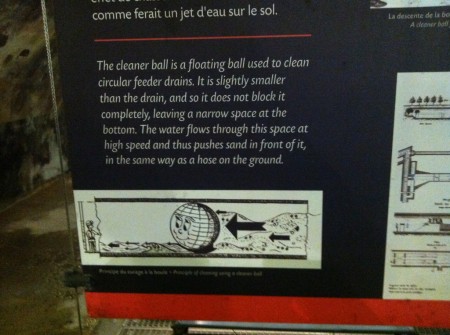
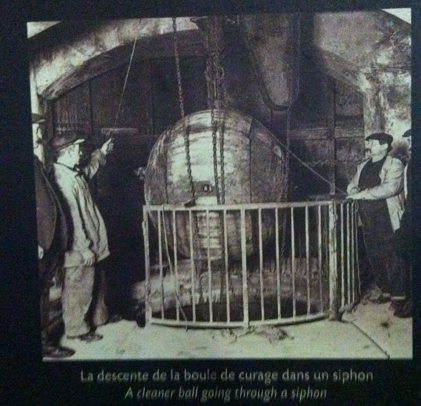
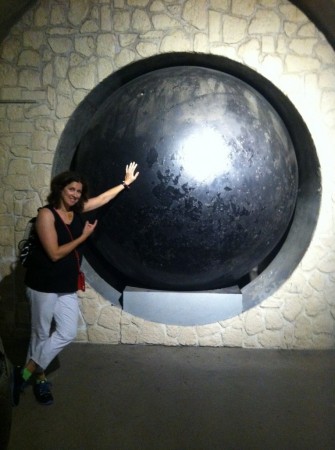
You can actually stand on grated flooring and watch the water whoosh by you as you make your way through the exhibit. Yes, it was a little sulphurous smelling down there, but I can’t begin to tell you how cool it was. Here’s a five-second video: IMG_2706My husband, I noticed, kept well away from the open grates. It was mostly me and the ten year old boys who ventured over them.
More than you want to know? All right, I’ll switch to open sewers channels in the streets.
We were walking through a lovely medieval district called Le Marais, which is also known as the Jewish quarter. I had to snap a picture of this narrow, cobbled street, which still has an open channel running through it the way it must have four hundred years ago.